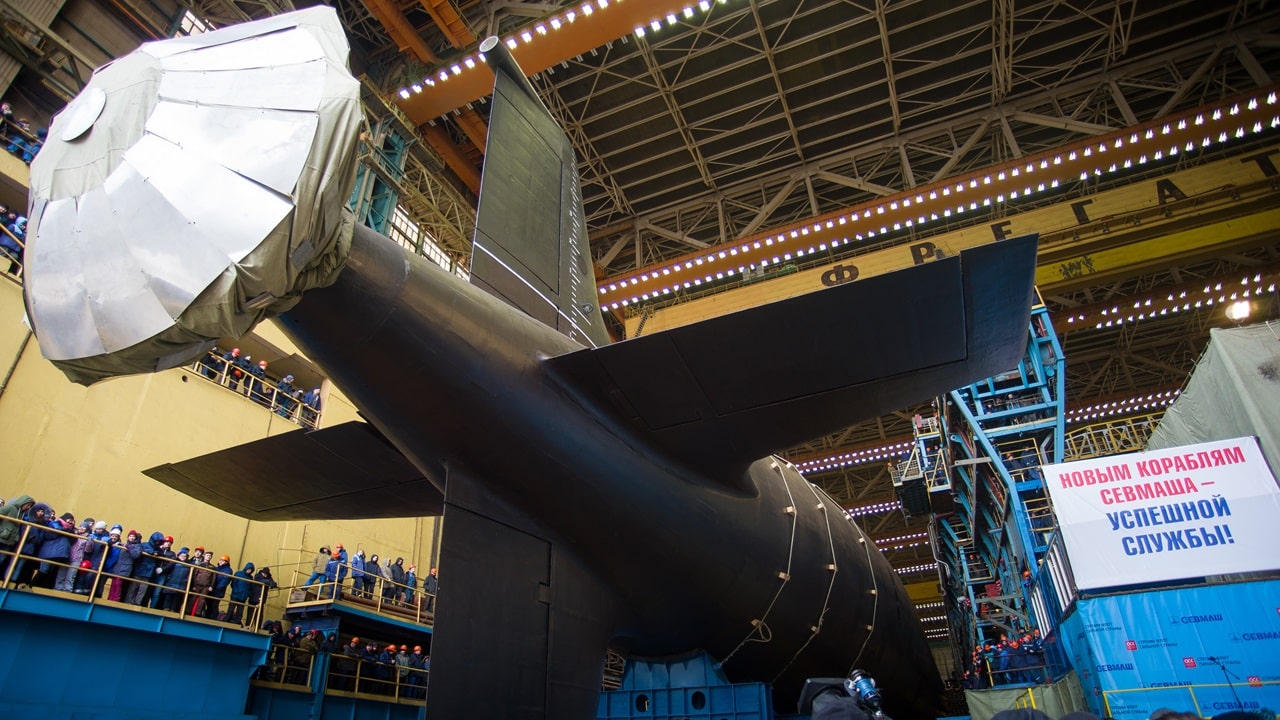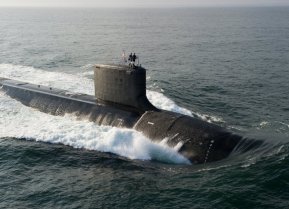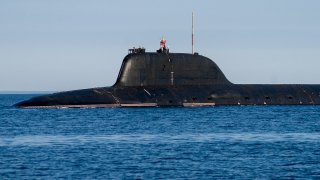Yasen-M: The New Russian Submarine The U.S. Navy Hates
Along with the Russian Navy's Borei-class ballistic missile submarines, the Yasen-class boats are reported to play a central role in Russia's defense and deterrence.
The U.S. Navy Feared the Yasen-M - Though it is a shadow of the former Soviet Navy, the current Russian Navy still commands one of the largest submarine fleets in the world with an estimated 58 vessels according to the Nuclear Threat Initiative.
It includes the Yasen-class submarines – also known as Project 885M – a nuclear-powered cruise missile submarine introduced to replace Soviet-era nuclear attack subs as part of the Kremlin's efforts to modernize its navy.
Today, even as many of Russia's military platforms have appeared to be overly hyped – and its surface navy is in a truly sorry state, its Yasen-class submarines are still considered to be among the best in the world.
Along with the Russian Navy's Borei-class ballistic missile submarines, the Yasen-class boats are reported to play a central role in Russia's defense and deterrence.
The Legacy of the Soviet Navy
The cruise missile subs were developed in the late 1980s by the St. Petersburg-based Malakhit Design Bureau of Machine-Building. It was initially intended to replace the aging Akula-class nuclear-powered attack submarines.
The program progressed slowly following the dissolution of the Soviet Union. While the lead vessel, Severodvinsk, was laid down in 1993, due to funding issues as a result of Russia’s financial crisis, the project sputtered in the following decade.
Only in the late 2000s, did Moscow return to the project, but by that point, it was seen as being on the verge of obsolescence.
Instead of starting from scratch, however, the Kremlin opted to relaunch the Yasen-class under the Yasen-M designation, which saw a slew of design tweaks and performance upgrades to address the roughly to-decade gap between Severodvinsk and the next Yasen-class submarine, Kazan.

That second boat was constructed in eight years, less than half the time to build the lead vessel. In addition to not being plagued by budget issues due to past financial troubles, the Kremlin took several steps to improve the production time.
However, given the ongoing sanctions imposed against Moscow, it is almost certain the future boats of the class won't arrive as scheduled.
Yasen-Class and Yasen-M Class: What We Know
The Yasen-class submarines have a submerged displacement of 13,800 tons and can reach a maximum speed of up to thirty-five knots. The Yasen-M revision further offered revamped onboard electronics, a slightly reduced overall length, and reportedly a new KTP-6 rector that is believed to reduce the submarine's noise levels significantly.
The Kazan is reported to field a conformal array sonar, as opposed to the spherical MGK-600 Irtysh sonar suite on the Severodvinsk, while the new boat is also believed to be equipped with a conformal array comparable to that of the Lira sonar suite aboard the new Lada-class diesel-electric attack submarine (SSK).
Unlike older attack submarines built in the late Soviet period, the Yasen-M class boats were developed as multi-purpose vessels that could carry different weapons, including the most advanced new long-range Tsirkon hypersonic cruise missiles. There are ten silos for vertically launched cruise missiles, and according to reports, the submarines can also be equipped with Kalibr-PL and Oniks cruise missiles as their basic strike weapons. The Kazan is also equipped with the UKSK (3P-14B) vertical launch system comprised of 8SM-346 modules.
It is reported to have a long-range strike capability that exceeds that seen on most Western assets.
Three Active – More to Come
Currently, three of the submarines – the Severodvinsk (K-560), the Kazan (K-561), and the Novosibirsk (K-573) are active. The former two are currently serving in the Northern Fleet while the latter is active with the Russian Navy's Pacific Fleet.
The submarine Krasnoyarsk (K-571) has been undergoing sea trials – and earlier this year, it was announced by Russian state media that the boat would conduct three training-combat test launches of "Kalibr-PL" and "Onyx" missiles during its state trials. It remains unclear if those tests have yet occurred.
In addition to the Krasnoyarsk, the Sevmash yard has four more Yasen-M vessels at various stages of construction.
When completed and following commissioning, those submarines will be based both with the Northern Fleet on the coast to the Barents Sea and with the Pacific Fleet in the Far East.
Armed with Zircon
In October 2001, Severdovinsk conducted two test launches of the 3M22 Tsirkon (3M22 Zircon), a scramjet-powered maneuvering anti-ship hypersonic cruise missile.
This past August, Moscow announced that it was in the process of equipping all of the Yasen-M – as well as other Russian Navy subs – with hypersonic weapons.
"Multi-purpose nuclear submarines of the Yasen-M project will ... be equipped with the Zircon missile system on a regular basis," Alexei Rakhmanov, chief executive officer of the United Shipbuilding Corporation (USC), told the state-owned RIA news agency.
The sea-based Tsirkon hypersonic missiles have a range of 900 km (560 miles), and can travel at several times the speed of sound. As it can maneuver in flight, it is difficult to defend against. The Russian Navy's multipurpose frigate Admiral Gorshkov had tested the strike of the platform earlier this year and has already been equipped with the missiles.
Russian President Vladimir Putin has vowed that Russia would mass produce the Tsirkon as part of the nation's efforts to boost its nuclear forces.
Author Experience and Expertise
A Senior Editor for 19FortyFive, Peter Suciu is a Michigan-based writer. He has contributed to more than four dozen magazines, newspapers, and websites with over 3,200 published pieces over a twenty-year career in journalism. He regularly writes about military hardware, firearms history, cybersecurity, politics, and international affairs. Peter is also a Contributing Writer for Forbes and Clearance Jobs. You can follow him on Twitter: @PeterSuciu.
All Images are from Shutterstock.


